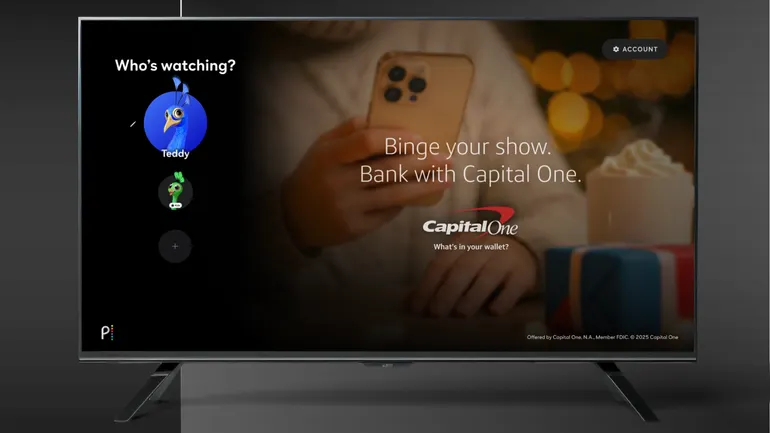Introduction:
In the fast-paced world of contemporary advertising, marketers face ongoing challenges in adapting to changing trends in media consumption and advancements in technology. Amidst a plethora of options, two major contenders stand out: Performance TV and Over-The-Top (OTT) advertising. As businesses seek to optimize their marketing strategies and allocate resources efficiently, it is crucial to grasp the nuances between these two approaches. This article provides a detailed comparison of Performance TV and OTT advertising, to equip marketers with the insights necessary to make informed decisions and select the most suitable channel for their advertising campaigns. By examining the complexities of each method and evaluating their strengths and weaknesses, marketers can effectively navigate the intricacies of modern advertising and ensure that their campaigns effectively engage target audiences in the constantly evolving digital landscape.

Understanding Performance TV and OTT:
Performance TV
It is centered on the conventional method of television advertising, in which companies buy airtime slots during programs or time slots. The essence of Performance TV hinges on its utilization of broadcast networks and cable providers to access a wide-ranging audience.

Advertisers depend on criteria like GRPs (Gross Rating Points), TRPs (Target Rating Points), and viewership statistics to assess the efficiency of their campaigns. Furthermore, innovations like addressable TV advertising facilitate more accurate targeting according to factors such as demographics, geographic positioning, and viewing preferences.
Over-the-top (OTT) platforms
OTT advertising, on the other hand, functions on digital streaming platforms that distribute content online, avoiding traditional television distribution channels. The key component of OTT advertising is its reliance on data-driven targeting features and real-time analytics.

Advertisers can employ advanced algorithms to divide audiences according to various criteria such as browsing habits, device usage, and viewing choices. Additionally, OTT platforms provide interactive ad designs, which enable the assessment of campaign effectiveness through metrics like click-through rates and completion rates.
Performance TV vs OTT: Understanding the Differences
| Performance TV | OTT advertising | |
| Distribution | Relies on traditional television channels for distribution, reaching audiences through broadcast networks and cable providers. | Utilizes streaming platforms to distribute content over the internet, reaching viewers who consume content on connected devices. |
| Audience Targeting | Offers limited targeting options, typically based on broad demographic criteria such as age, gender, and location. | Provides precise targeting capabilities based on data and behavioral insights, allowing advertisers to segment audiences based on specific interests, behaviors, and preferences. |
| Real-Time Tracking | Has limited tracking capabilities, with reporting typically delayed and based on metrics such as viewership ratings. | Enables real-time performance tracking and analytics, providing advertisers with immediate insights into ad performance, engagement metrics, and audience behavior. |
| Interactivity | Ads are typically static and offer limited interactivity, with viewers having minimal engagement options. | Offers interactive ad formats, such as clickable CTAs, quizzes, and immersive experiences, enhancing viewer engagement and interaction. |
| Cost | Can be expensive, with costs determined by factors such as airtime, ad placement, and program popularity. | Offers flexible pricing models, including cost-effective options such as cost-per-impression (CPM) or cost-per-click (CPC), allowing advertisers to optimize their budgets and maximize ROI. |
| Reach | Provides broad reach and mass-market appeal, making it suitable for reaching large, diverse audiences. | Offers targeted reach, allowing advertisers to reach niche audiences and specific demographics with precision, enhancing campaign effectiveness and efficiency. |
Who Should Advertise on OTT and Performance TV
Determining who should advertise on Over-The-Top (OTT) platforms and Performance TV depends on various factors including target audience demographics, campaign objectives, and budget considerations. Here’s a breakdown of which platform suits different advertisers:
1. OTT Advertising:
· Younger Demographics: OTT platforms are particularly effective for reaching younger audiences, including millennials and Generation Z. Statistics show that 72% of OTT viewers fall within the 18-34 age range, making it an ideal platform for brands targeting this demographic.
·Tech-Savvy Consumers: Advertisers looking to engage tech-savvy consumers who prefer streaming content over traditional TV may find OTT advertising more effective. This includes individuals who have shifted away from cable TV subscriptions in favor of on-demand streaming services.
·Niche Audience Targeting: OTT platforms offer advanced targeting capabilities, making them suitable for advertisers looking to reach specific niche audiences based on interests, behaviors, and preferences.
2. Performance TV:
·Older Demographics: Performance TV continues to appeal to older demographics, with a significant portion of adults aged 55+ still watching traditional TV daily. Brands targeting this demographic, such as those in the healthcare, financial services, and retirement planning industries, may find Performance TV advertising effective.
·Broad Brand Awareness: For brands seeking broad brand awareness and mass-market appeal, Performance TV can be an effective channel. Prime-time TV slots and high-profile events offer opportunities to reach a large and diverse audience base.
·Established Brands: Established brands with larger advertising budgets may benefit from Performance TV advertising to reinforce brand messaging and maintain a visible presence in the market.

Data:
· According to a study by Nielsen, 72% of OTT viewers fall within the 18-34 age range.
· The Pew Research Centre reports that 61% of adults aged 50-64 and 67% of those aged 65+ still watch traditional TV daily.
Why Marketers Should Care About Performance TV and OTT Advertising
Marketers should pay close attention to both Performance TV and Over-The-Top (OTT) advertising due to their unique technical advantages and effectiveness in reaching different audience segments. Here’s a technical breakdown of why marketers should care about these advertising channels:
Performance TV:
·Broad Reach and Brand Awareness: Performance TV offers marketers the opportunity to reach a vast audience through traditional television channels. With its broad reach and mass-market appeal, Performance TV is well-suited for building brand awareness and reaching a diverse audience base.
·Established Metrics: Performance TV provides marketers with established metrics such as Gross Rating Points (GRPs) and Target Rating Points (TRPs) for measuring ad performance and audience reach. These metrics allow marketers to assess the effectiveness of their campaigns and make data-driven decisions.
·Credibility and Legitimacy: Advertising on television lends a sense of credibility and legitimacy to brands, as viewers perceive TV ads as more trustworthy and authoritative compared to digital ads. This can be particularly beneficial for established brands looking to reinforce their brand image and messaging.
OTT Advertising:
·Precise Targeting: OTT advertising offers advanced targeting capabilities based on data and behavioral insights. Marketers can precisely target specific audience segments based on demographics, interests, and viewing behaviors, allowing for more personalized and relevant ad experiences.
·Real-Time Performance Tracking: OTT advertising enables real-time performance tracking and analytics, providing marketers with immediate insights into ad performance, engagement metrics, and audience behavior. This allows for timely optimization of campaigns to maximize ROI and effectiveness.
·Interactive Engagement: OTT platforms offer interactive ad formats, such as clickable CTAs and interactive overlays, that engage viewers and encourage interaction with ads. This interactivity enhances viewer engagement and allows marketers to capture valuable data and insights.

What’s the Future of OTT and Performance TV
The outlook for Over-The-Top (OTT) and Performance TV advertising is shaped by technological advancements, changing consumer behavior, and evolving industry trends. Here’s an elaboration on the prospects of both advertising channels:
OTT Advertising:
· Continued Growth: OTT advertising is poised for continued growth in the coming years, driven by the increasing popularity of streaming platforms and on-demand content consumption. As more consumers cut the cord and opt for digital streaming services, advertisers are expected to allocate larger portions of their advertising budgets to OTT platforms.
·Advanced Targeting Capabilities: The future of OTT advertising lies in its advanced targeting capabilities, allowing advertisers to deliver personalized and relevant ads to highly segmented audience groups. As data analytics and machine learning technologies continue to evolve, OTT platforms will offer even more sophisticated targeting options based on user behavior, preferences, and demographics.
·Enhanced Measurement and Attribution: Future developments in OTT advertising will focus on improving measurement and attribution capabilities. Advertisers will have access to more robust analytics tools and attribution models, enabling them to accurately measure the impact of their campaigns and attribute conversions across multiple touchpoints.
Performance TV:
· Adaptation to Digital Trends: While traditional TV advertising faces challenges from digital alternatives, Performance TV is expected to adapt to changing consumer behaviors and technological trends. Television networks and cable providers will continue to innovate and offer new advertising solutions that integrate digital capabilities and address the evolving needs of marketers.
· Integration with Data and Analytics: The future of Performance TV lies in its integration with data-driven insights and analytics. Television networks will leverage data analytics and audience measurement technologies to provide advertisers with more granular insights into viewer behavior, preferences, and engagement levels. This integration will enable more targeted and effective TV advertising campaigns.
· Cross-Platform Synergy: Performance TV will increasingly align with digital advertising channels to create cross-platform synergy. Television networks will explore partnerships and integrations with OTT platforms and other digital media channels to offer advertisers holistic advertising solutions that reach consumers across multiple screens and devices.
Making the Right Choice for Your Business:
When deciding on the best advertising option for their business, marketers should carefully analyze various factors such as campaign goals, target audience demographics, budget limitations, and desired return on investment before choosing between Performance TV and OTT advertising. By utilizing sophisticated analytical tools and industry knowledge, marketers can make well-informed decisions that enhance the efficiency of their advertising campaigns.
The Last Thought
The question facing advertisers is whether Performance TV or OTT advertising is the more advantageous option. The decision hinges on a range of considerations such as campaign goals, target market characteristics, financial limitations, and expected return on investment. For companies aiming to engage a wide range of viewers with widespread appeal, Performance TV remains a popular choice. Conversely, for marketers interested in reaching specific demographic groups with accuracy and monitoring campaign effectiveness immediately, OTT advertising presents notable benefits. By carefully analyzing campaign objectives, audience insights, and available resources, advertisers can make informed decisions and achieve success in today’s competitive advertising landscape.










Leave a Reply